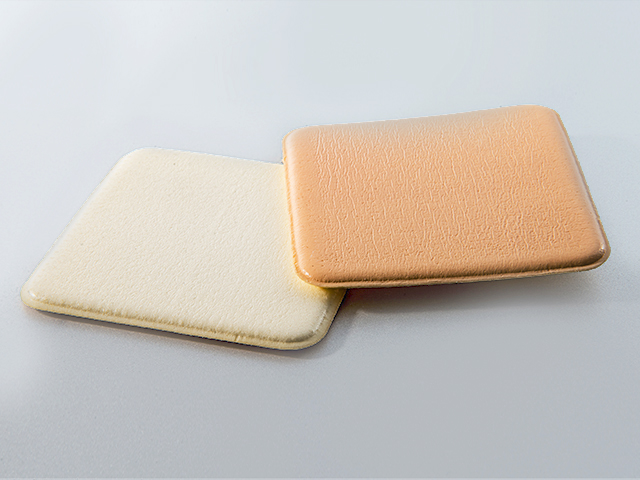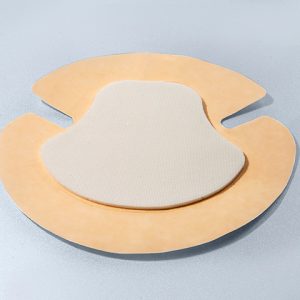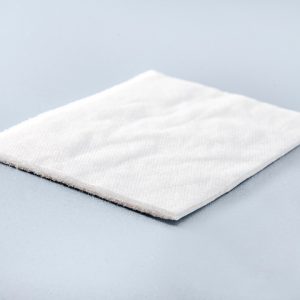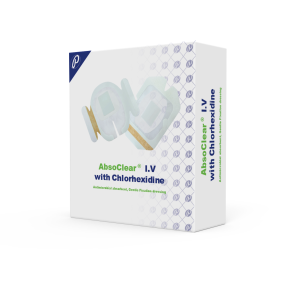Description
Product Info
ESPUMA® Ag C Sealed Edges is a five layer construction wound dressing, made of activated charcoal wound pad, sandwiched between two layers of polyurethane foam. In addition to this, the upper polyurethane foam layer is laminated with breathable polyurethane film, while the lower polyurethane foam layer is laminated with polyethylene silver net.
The edges of the dressing are sealed by a special production technique to prevent lateral leakage and maceration of healthy skin surrounding the wound.
- Activated charcoal layer adsorbs unpleasant odours that usually associate chronic wounds.
- Outer and inner polyurethane foam layers can manage moderate to heavy exudates.
- Semi permeable outermost polyurethane film acts as a viral barrier and a bacterial barrier. Moreover, it is waterproof but allows evaporation of excess exudates absorbed by foam, so it increases the total fluid handling capacity of the whole composite.
- Perforated Polyurethane Film wound contact layer is non adherent, allowing dressing removal without pain or trauma. In case of polyethylene silver net, it acts both as non adherent wound contact layer and antimicrobial barrier to prevent bacterial colonization in case of wounds at high risk of infection.
- Sealed edges prevent lateral leakage in case of heavily exuding wounds which in turn prevents maceration of healthy skin surrounding the wound.
- ESPUMA® Ag C Sealed Edges is indicated for the treatment of most types of chronic wounds but is particularly recommended for the management of malodorous wounds and heavily exuding wounds:
- Pressure ulcers stage II and superficial stage III.
- Partial and full thickness diabetic foot ulcers.
- Venous insufficiency leg ulcers.
- Partial and full thickness arterial ulcers.
- Partial thickness burns and abrasions.
- Open surgical wounds.
- Skin tears.
- ESPUMA® Ag C Sealed Edges, also forwounds of high risk of infection, including fungating lesions, infected pressure sores and heavily exuding leg ulcers.
- Dry wounds and necrotic tissues
- Wounds that extended to reach bones or muscles
- Do not use with oxidizing agents as hypochlorite solutions or hydrogen peroxide solutions as this can breakdown the absorbent hydrocellular component of the dressing.
- In case of ESPUMA® Ag C Sealed Edges, experience is limited with neonates, newly born and pregnancy.
from the wound contact layer outward
- Polyethylene silver net
- Polyurethane foam 5 mm thickness
- Activated charcoal wound pad
- Polyurethane foam 3 mm thickness
- Polyurethane film, Skin color, 25 micron
1. Cleanse the wound in accordance with local clinical protocols.
2. Select an appropriate dressing size that overlaps the wound margin by at least two centimeters.
3. Remove the sterile dressing from the package using aseptic technique.
– For Non-adhesive variants:
1. Non-Adhesive variants can be cut to fit awkward areas. When used under compression therapy, the dressing must be cut to the size of
the wound.
2. Place the dressing on the wound site.
3. Secondary film dressing or conforming bandage should be used to secure the dressing in place.
– Dressing change and removal:
• Dressing change frequency will depend on patient condition as well as wound exudate level.
Change dressing when reached its maximum exudate management level or as instructed by a healthcare professional.
• To remove an adhesive dressing, loosen the adhesive film border before lifting the dressing away from the wound.
• To remove non-adhesive dressing, gently lift the corners of the dressing away from the wound.
• Cleanse the wound prior to application of new dressing.
Espuma® Ag C Sealed Edges | Size | Pieces/Case | Boxes/Case |
ESPUMACSAG7575 | 7.5×7.5cm | 10 | 48 |
ESPUMACSAG100100 | 10x10cm | 10 | 48 |
ESPUMACSAG100150 | 10x15cm | 5 | 24 |
ESPUMACSAG100200 | 10x20cm | 5 | 24 |
ESPUMACSAG150150 | 15x15cm | 5 | 24 |
ESPUMACSAG5050 | 5x5cm | 10 | 48 |
ESPUMACSAG75100 | 7.5x10cm | 10 | 48 |
ESPUMACSAG100250 | 10x25cm | 5 | 24 |
Other sizes are available upon request









Reviews
There are no reviews yet.